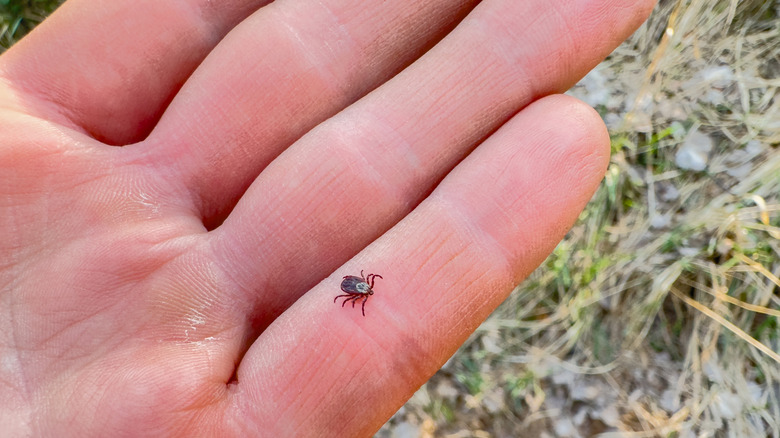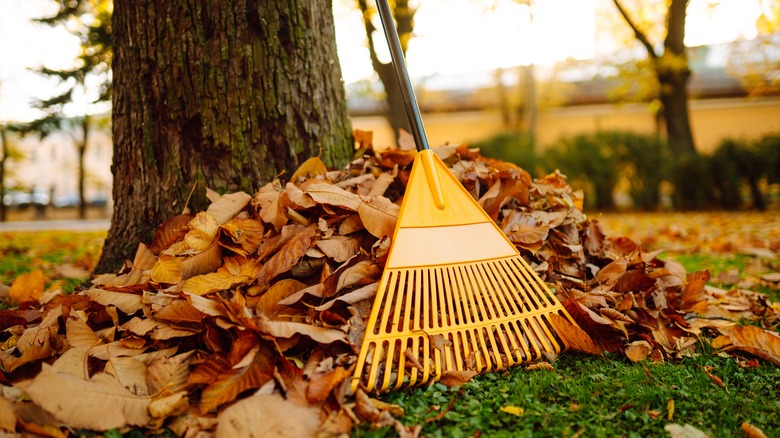The Common Myth About Ticks And Trees In Your Yard
Keeping ticks out of your yard in summer offers peace of mind to enjoy your property, but how do ticks choose which yards to infest? The common myth about ticks jumping down from the trees in your yard after waiting for their next victim, is entirely false. While these pests are attracted to leaf litter, they don't actually hide in trees looking for hosts.
Truthfully, ticks aren't very agile. These creepy crawlies don't jump; instead, they engage in something called "questing," extending their legs and letting the tiny hairs on them to stick to anything nearby and carry them away. On top of that, many ticks, especially the ones with Lyme disease, are blind, meaning they don't spot their hosts through sight. Instead, ticks sense heat, and the moment they feel it from an animal or even a human, they reach out and latch on. From there, ticks will crawl along clothing until they find exposed skin, often on our arms or neck, making it seem like they fell from out of a tree. In reality, they grabbed onto a piece of fabric and moved their way on up.
Trees aren't even a tick's preferred habitat since they are not jumpers or serious climbers. Instead most live in low-lying bushes, shrubs, and tall grasses, reaching heights of up to two feet as they wait for a host to pass. And they're especially partial to moist areas. The best way to prepare for ticks and deal with them is to have a well-mowed, clear lawn, including around your trees.
Remove leaf debris and ensure proper drainage around trees to prevent ticks
In order to protect yourself and your home from ticks, you need to make your yard less attractive to these pests. Ticks love hiding out in dense canopies and leaves, and they gravitate toward shady, moist areas especially when breeding. If you want ticks to stay far away from your home, you need to remove fallen branches and leaves and ensure there is proper drainage around trees and other plants.
Rake, bag up, and remove all debris and decaying matter from your property. While you do so, be sure to wear the proper protective gear, including long sleeves, a hat, pants, and gloves. You should also apply the tick-repellent solution while you work, following all the instructions listed on the product label.
In the meantime, you can try planting various flowers and herbs around your trees in an effort to repel ticks. Mint and rosemary are such herbs whose fragrance is known to deter certain insects. Landscaping with cedar mulch and adding diatomaceous earth to your flower beds can also work.

